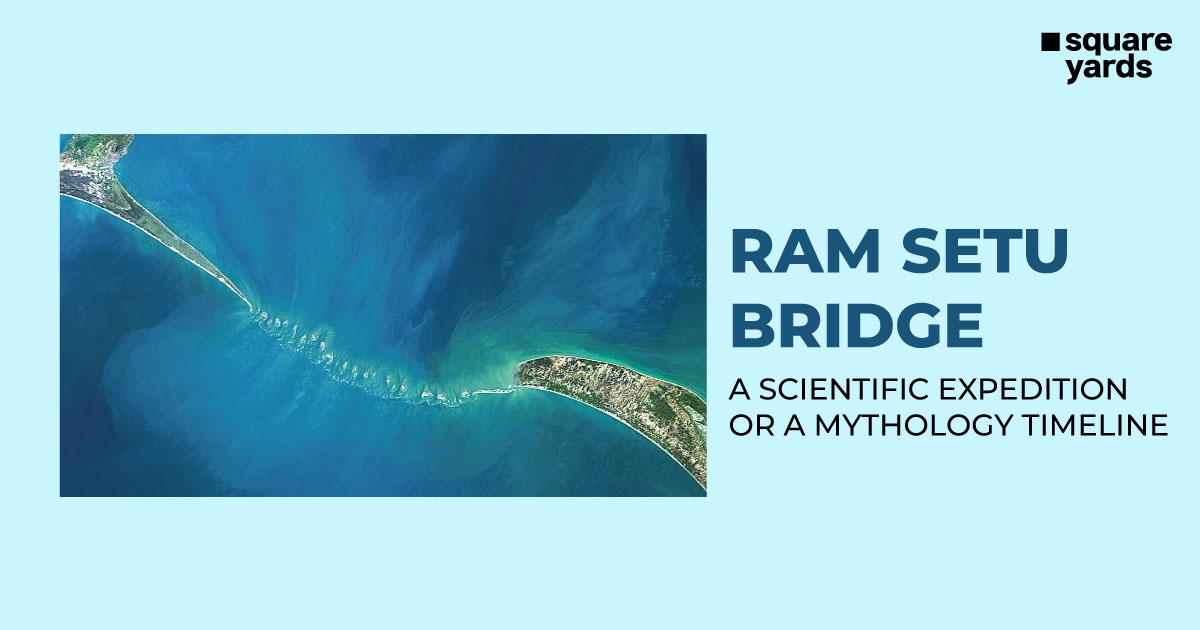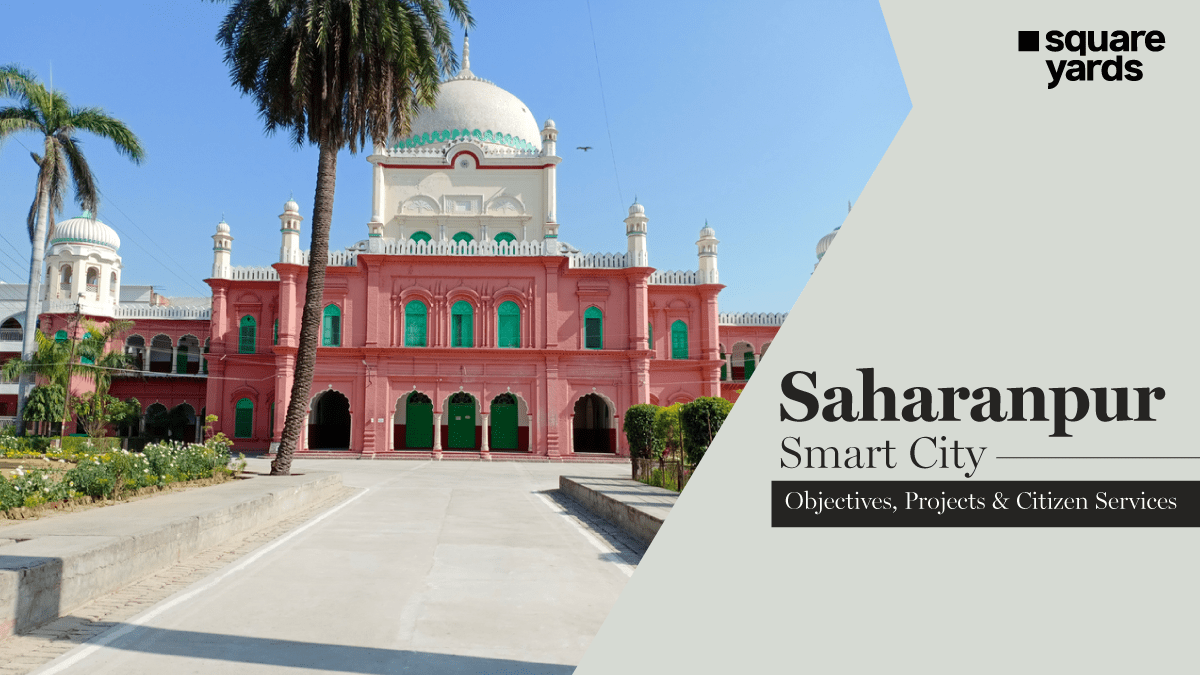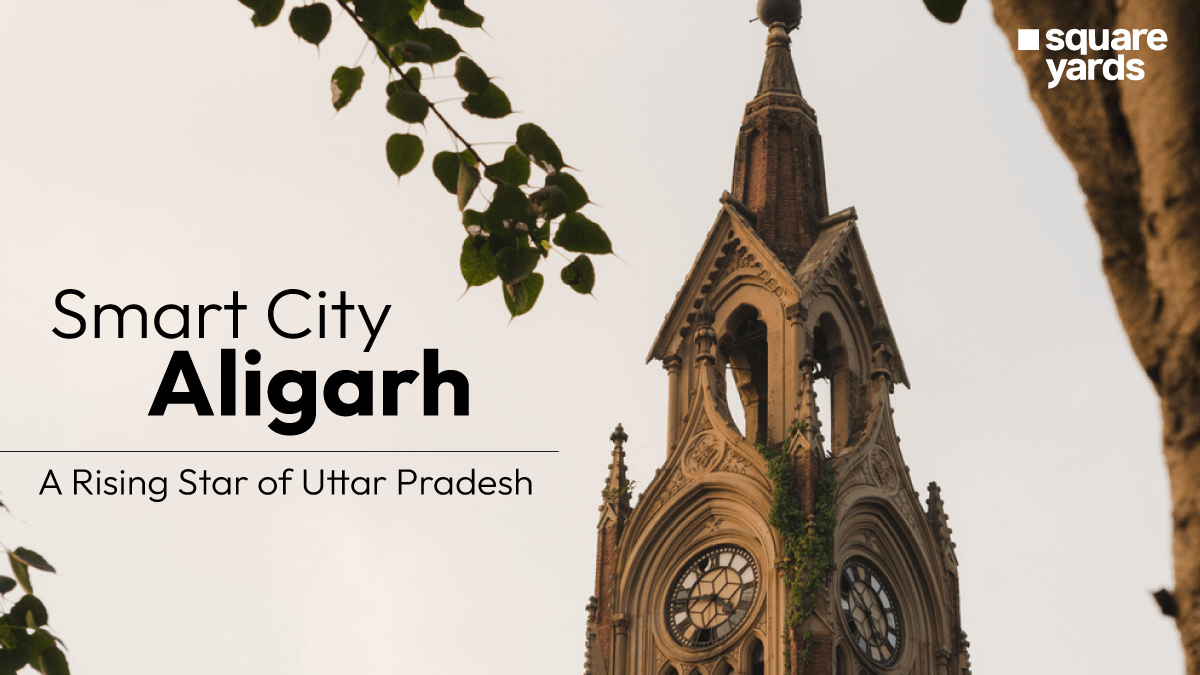The historical Indian sculptures, monuments, and other landmarks are noteworthy and reflect the religious beliefs of the majority of the population. India, a country with a rich historical heritage, holds pride in its legacy and landmarks, such as the Taj Mahal and the Red Fort. The Ram Setu bridge is one such mythical monument. Ram Setu bridge is many centuries old and continues to be a hot topic among archaeologists, scientists, and people across the globe. Currently, a case is pending in the Supreme Court to brand the Ram Setu bridge as a national monument.
This article will cover every detail and procedure used to uncover the origins of the Ram Setu Bridge.
Table of contents
- All About Ram Setu
- Facts About Ram Setu (Adam’s Bridge)
- Importance of Ram Setu in Mythology
- Is Ram Setu Man-Made?
- Why is Ram Setu Known as Adam’s Bridge?
- The Expedition of Ram Setu Bridge
- ASI Approves Further Research on Ram Setu Bridge
- Ram Setu Bridge: Mysterious Facts About the Structure
- Sethusamudram Project and the Supreme Court
- Engineering Students in Madhya Pradesh to Learn About Ram Setu
- Ram Setu Bridge’s Influence on Bollywood
- Frequently Asked Questions (FAQs)
All About Ram Setu
Ram Setu is one of the rare structures that serves as a bridge between mythology and history. In the Ramayana, the route Rama and his army took to get to Sri Lanka was through the Rameshwaram bridge, also known as Adam’s Bridge. After putting in a lot of effort to bring back his wife Sita, Rama and his followers travelled from Rameswaram to Sri Lanka. With this belief, the Ram Setu bridge was built to cover the India to Sri Lanka distance.
Recently, the Indian government gave its approval for undersea research to analyse and establish the precise age of the India-Sri Lanka bridge. It will also concentrate on learning how this Setu came to be. In this study, the Ram Setu bridge was declared a national monument and has been concurrently ongoing and under dispute since 2005. Therefore, in light of everything above, it is now even more crucial to explore the potential connections between this Indian historic structure and the architecture of the modern period.
Facts About Ram Setu (Adam’s Bridge)
- The causeway that covers the India to Sri Lanka distance is identical to the Ram Setu, also known as Adam’s Bridge. The bridge runs from Mannar Island, in Sri Lanka, to Pamban Island, in Tamil Nadu, India.
- On a rough scale, this Ram Setu bridge is 50 kilometres long. Additionally, this bridge divides the Palk Strait from the Gulf of Mannar. The shallow seas surrounding the Setu range from 3 feet to 30 feet.
- Geology has also provided evidence that Ram Setu was a geographical connection between the two countries, India and Sri Lanka.
- Several scientific studies up until 1480 asserted that the Adam’s Bridge was built above sea level. However, the bridge was damaged due to the devastation caused by the hurricane in that region. Until the cyclone hit that region, the bridge was accessible on foot.
- According to oceanography, the bridge is considered 7,000 years old or so. This information agrees with carbon dating on a beach near Dhanushkodi and Mannar Island.
- The Setusamudram Project was designed in 1860 by Alfred Dundas Taylor and recently approved by the Indian Government. This proposal was suggested as a quick route from Mannar Island to Pamban Island. However, as warned by environmentalists, this initiative has the potential to harm the natural reefs, which have existed for countless years. The Setusamudram project was to be carried out using the Pamban Pass deepening. The Ram Setu won’t sustain any harm in this manner. However, this project is currently pending.
Importance of Ram Setu in Mythology
The first reference to Ram Setu appears in the Hindu epic tale known as the Ramayana. This Setu is thought to have been built thanks to the efforts of Lord Rama’s army, with guidance from Nala (a warrior monkey and the engineer behind the building of the Setu). The Rameshwaram bridge was built for Lord Rama to travel to Sri Lanka and save his wife Sita from King Ravana’s imprisonment. According to Indian epic tradition, the Rama Setu was constructed using floating stones with the name of Lord Rama etched on them, rendering the stones unsinkable.
Other names for Rama Setu include Nala Setu, Adam’s Bridge, and Setu Bandha.
The Ram Setu bridge is considered a notable historical and archaeological relic of the Ramayana. According to Hindu mythology, Ram Setu is a holy location. Therefore, building a bridge over this sacred location is not appropriate.
Is Ram Setu Man-Made?
Ram Setu bridge has been a topic of controversy for over four decades now. Many studies are currently being conducted to comprehend Ram Setu’s genuine essence. However, recently there have been Ram Setu images from NASA, mostly satellite images that act as proof of evidence. According to the Ram Setu images from NASA, the stones across India and Sri Lanka are perched on a sandbar, commonly known as a shoal. While the investigators believe the sandbar is natural, the stones are not. Ram Setu may be a man-made bridge, as per the proof and belief of many. However, it is said that the Rameshwaram bridge was only visible until the 15th century.
Why is Ram Setu Known as Adam’s Bridge?
Rameshwaram bridge was initially featured in Ibn Khordadbeh’s Book of Roads and Kingdoms (c. 850). In this text, Ram Setu is referred to as the “Bridge of the Sea.” The Setu was given the name “Adam’s Bridge” as Adam was using it to travel from Sri Lanka to India after being banished from Eden’s Garden. In addition to this incident, a British cartographer named this region Adam’s Bridge on a map he created in the year 1804.
The Expedition of Ram Setu Bridge
In March 2021, archaeologists and scientists performed the Setu mission. It was carried out to investigate the limestone chain of shoals that runs between Rameshwaram in India and Sri Lanka. This project aims to comprehend the characteristics of the limestone rocks as well as the geological evolution of the rocks and other distinctive features of the 8-kilometre-long Ram Setu. Over the past few years, the Indian Council of Historical Research has received countless proposals. But this is the first proposal that the board has approved.
In addition, the board has allocated enough funds for the bridge’s expedition. The primary goal of the mission is to determine whether the Setu is artificial and to end the protracted discussion around this mythical bridge.
ASI Approves Further Research on Ram Setu Bridge
The proposal for Ram Setu’s investigation has been authorised by the Central Advisory Board of Archaeology, a government organisation established under the Archaeology Survey of India (ASI) in 2021. The Rama Setu bridge’s creation date and method are being uncovered through this investigation. The underwater research began in 2021.
The Council for Scientific and Industrial Research (CSIR) is in charge of researching the Ram Setu bridge. Along with CSIR, the National Institute of Oceanography (NIO), a Goa-based organisation, is concentrating on this research to learn every aspect of the creation of the Adam’s Bridge, including how it was built. The study will also examine a few additional issues, such as any possible submerged settlements near the bridge.
The National Institute of Oceanography’s research ship, designated “Sindhu Sankalp” or “Sindhu Sadhana,” is being used to explore this project by collecting sediment samples from at least 35 to 40 metres below sea level. This study is primarily grounded in archaeological findings and geologically dated artefacts.
Additionally, radiometric techniques are being utilised to establish the precise age of the Ram Setu bridge, which is thought to be made of coral and pumice stones. Calcium carbonate is one of the minerals found in these corals. The age of the Ram Setu bridge can be precisely determined with the use of these minerals.
Ram Setu Bridge: Mysterious Facts About the Structure
Even after the controversy over whether or not the Ram Setu is man-made, no substantial piece of proof has been located. There are a few mysterious truths regarding the bridge that you might not be aware of. Here are a few of them:
- Nala Setu, or Adam’s Bridge, is another name for Rama Setu. The former name of this Setu was drawn from Islamic scripture, where it first appeared. The existence of Adam’s Peak in Sri Lanka has been mentioned in this Islamic literature. Since the architect who created the limestone shoal bridge was named Nala (a warrior monkey from the Ramayana), this bridge is also known as Nala Setu.
- The carbon dating of beaches and studies of oceanography has indicated a period that corresponds with the Ramayana’s chronological period and is said to be 7,000 years old.
- In the Ramayana, it is mentioned that floating stones were used to build the Ram Setu bridge. Strangely, these floating stones are still visible throughout Rameswaram today. According to scientific theories, most volcanic stones float in water. This may help to explain why the rocks that make up this bridge are arranged in a line.
- The Adam’s Bridge is submerged underwater, yet ships cannot navigate across it. The depth of the water here varies at several locations, making it shallow. Thus, ships from India must travel a different detour to reach Sri Lanka.
Sethusamudram Project and the Supreme Court
A petition was signed and sent to the Supreme Court asking for Ram Setu’s protection by Dr. Swammy in 2007. To pursue the petition, the Supreme Court asked the Indian government if it wanted to take the Rama Setu out of the Setusamudram project. The government assured the court that the Ram Setu would not be harmed or touched by this project. In addition to the plea, Dr. Swamy addressed the topic of classifying Ram Setu as a National Heritage Monument, but the Top Court issued a stay order on the project’s work over Ram Sethu.
The Sethusamudram project called for massive excavation and removal of the limestone shoals that make up the mythical Setu to create an 83-km long deep-water channel connecting Mannar with Palk Strait. The two nations will build a shipping canal to establish the connection. The sea that separates India and Sri Lanka is known as Setusamudram, and its depth is less than 10 metres. India still lacks a continuous canal for navigation connecting the country’s east and west coasts because the area is too shallow. The SSCP suggested building a waterway directly linking India’s two coasts. Additionally, this will shorten the travel time between Chennai and Cape Comorin.
Furthermore, it will aid in stopping the ships from being turned around and sailing directly toward Sri Lanka. As a result, the Setusamudram Shipping Canal Project will also help to shorten the typical travel time between the coasts.
In 2022, on July 26, Dr. Subramanian Swamy, a Rajya Sabha member, asked for an expedited hearing on his request from the Centre to declare Ram Setu a national historical monument, and the verdict is still pending.
Engineering Students in Madhya Pradesh to Learn About Ram Setu
The Madhya Pradesh state government has agreed to add mythological Indian literature to the curriculum for undergraduate and engineering students. Ram Setu’s studies will be a part of the engineering students’ curriculum.
It was allegedly asserted by the state’s minister of education, Mohan Yadav, that NASA research had proven that Ram Setu was a man-made bridge, created millions of years ago.
Ram Setu Bridge’s Influence on Bollywood
The Indian cinema (Bollywood) uses several adaptations of Indian mythology and creates numerous movies and television shows. From Ramayana to Mahabharata, most of us have seen every version of it. The same applies to the likes of the Ram Setu bridge. A Hindi language movie adaptation of the Ram Setu is being made by the film director Abhishek Sharma with the famous Akshay Kumar in the lead role. The movie is an adventure drama set to be released in October 2022. The plot of the movie depicts an atheist archaeologist who has since become a believer and must race against time to prove the actual existence of the mythical Ram Setu before the evil forces demolish the foundational piece of India’s history.
Frequently Asked Questions (FAQs)
Is the Ram Setu bridge still there?
The Sethusamudram Project was supposed to be completed by deepening the Pamban Pass to conserve the Rama Setu. However, the project is now uncertain and at a standstill. According to oceanography studies, the bridge is 7,000 years old.
Can we walk through Ram Setu?
The Rameshwaram island in India and the northwestern coast of Sri Lanka are connected by a famous and ancient bridge – Ram Setu. You can simply stand or walk on the bridge and enjoy the enormous pleasure of having an endlessly blue water view on both sides.
Why is Ram Setu called Adam Bridge?
Ans: Adam’s Peak is a mountain in Sri Lanka that is mentioned in certain early Islamic writings (where it is said that Adam from the Bible fell to earth). The name Adam’s Bridge comes from the texts’ descriptions of Adam using the bridge to go between Sri Lanka and India after he was expelled from the Garden of Eden.
What is the truth behind Ram Setu?
There is a mention of the Ram Setu in the Ramayan, saying it was built to rescue Sita, whom Ravana kidnapped. However, there is no scientific truth behind it. The Ram Setu bridge was visible until the 15th century only.
How long did Ram Setu take to build?
To rescue Sita, Rama had to cross Sri Lanka. To assist Rama in building the Ram Setu bridge to Lanka in just five days, Brahma produced an army of vanaras or smart warrior monkeys.























